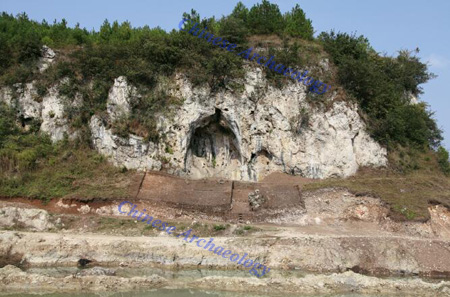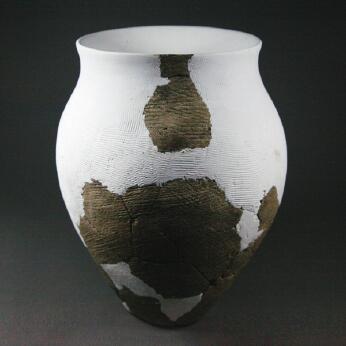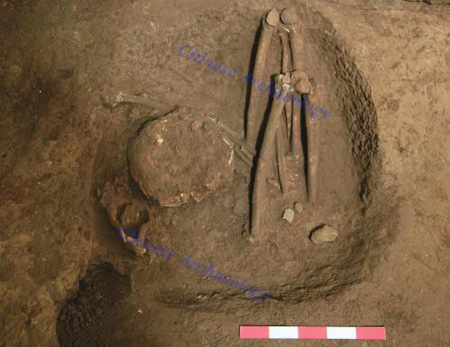The Breakthrough of Pre-historical Niupodong Cave Site in Guizhou Province
From:Chinese Archaeology NetWriter:Date:2017-01-20
Niupodong Cave Site was located on the Niupo Hill, which was 0.2 km east of Pingzhai Village, Machang town, Pingba County, Guizhou Province. In the summer of 2008, the Cultural Heritage Administration of Pingba County discovered this site during the third national archaeological survey. Nov. 2011, IA CASS (Institute of Archaeology, Chinese Academy of Social Sciences), Archaeological Institute of Guizhou Province, and Cultural Heritage Administration of Pingba County conducted a joint re-investigation on this site, which revealed it as the well preserved early Neolithic Age cave site in Guizhou’s middle part, possessing significant scientific value, therefore, began the officially excavation in the approving of State Administration of Cultural Heritage.
Cave B
The continuous investigation and excavation certified the three locations’ cultural feature and range. The size of Cave A, B and C was 500, 420, 120 square meters respectively. Most of the accumulation was outside the cave. 100 square meters had already been excavated, Cave A was the richest and most representative, and the accumulation was 6.7 m in thick, the age of which ranged from late Palaeolithic period lasted to historical period.

Pottery of phase IV

Tomb of phase II

Tomb of phase III
Based on the stratigraphic relationships and unearthed remains, the site could be divided into five phases. The first phase, culture feature was mainly chipped stone implements with high content of limestone, included chopper and cores, etc. The age was about 15000 years ago. The second phase, 6 tombs was discovered with 11 skeletons. The unearthed remains was plenty, which mainly was small chipped stone implement with flint as material, including stone tools, cores, flakes, broken block, wasted flake, and chipping, etc. Besides, there were few pebble tools, polished bone tools and typical microlithic tools, the age of which was 10200 to 8700 years ago. The third phase, 1 tomb was discovered. Polished stone implements were appeared, and microlithic tools was still popular, while other remains were mainly small chipped stone implements, the age of which was 8000 to 5500 years ago. The fourth phase, pottery was appeared, while the number was few, simple in shape, severely destroyed, decorated with cord, bow-string, and stamp patterns, etc.. Few small chipped stone implements still existed, and the age of this phase was 5000 to 3000 years ago. The fifth phase, pottery with trellis pattern was appeared which was very few with high quality, dating to Spring & Autumn Period and Warring States Period.

